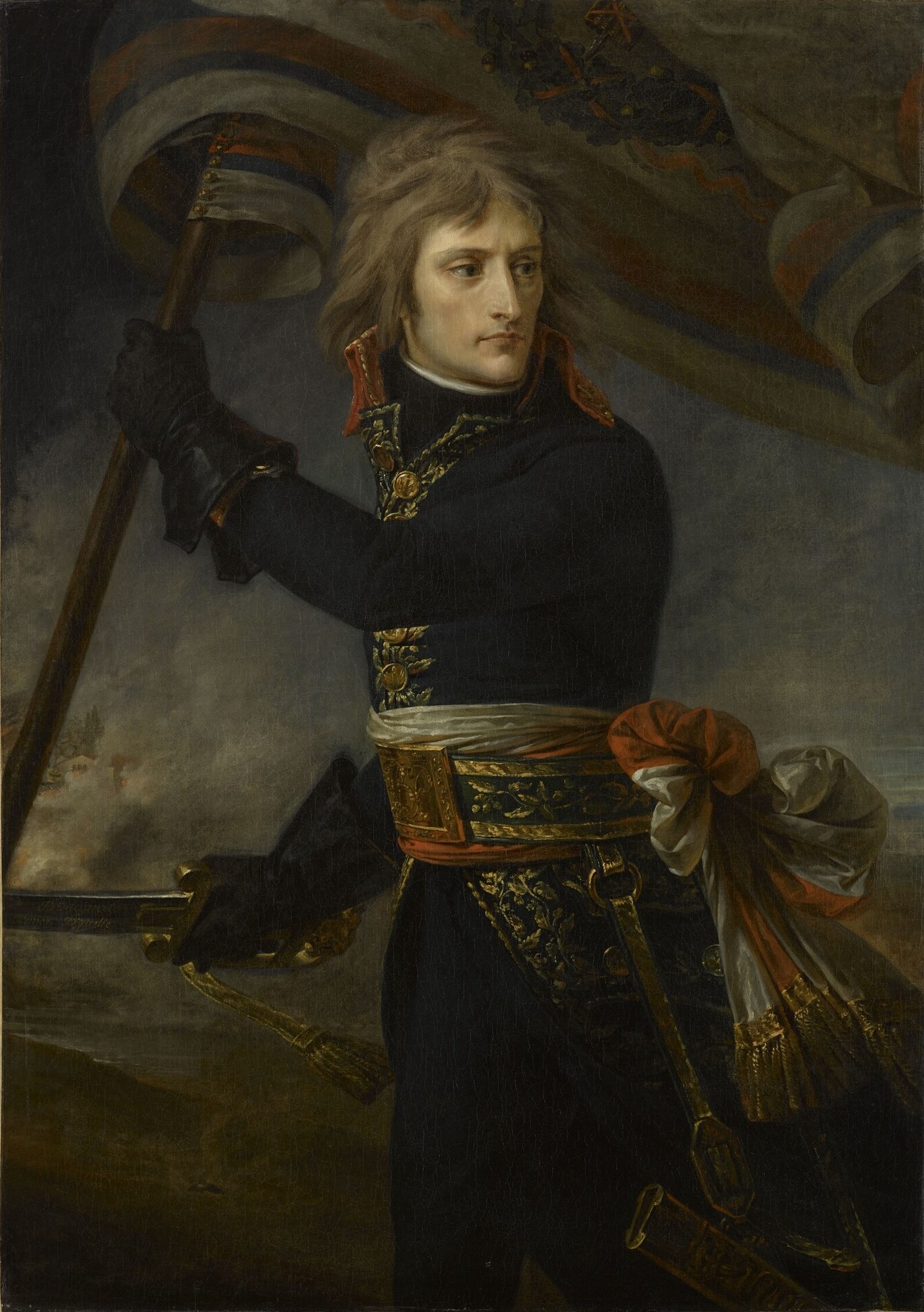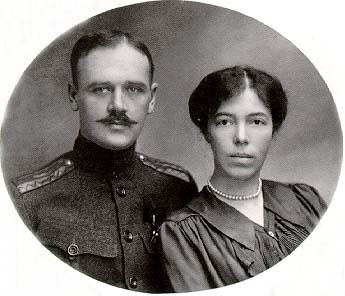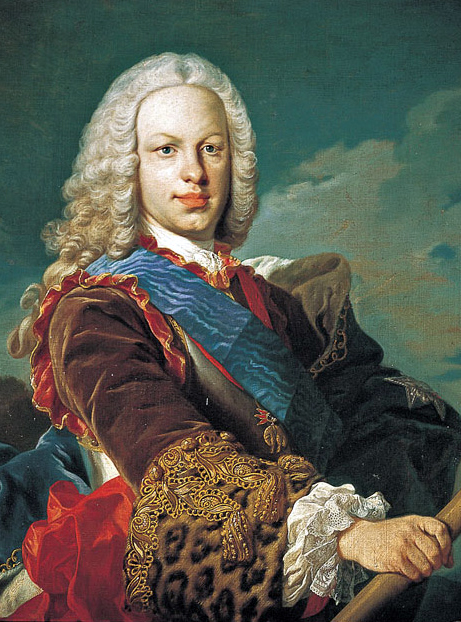by Susan Flantzer
© Unofficial Royalty 2024

Henry’s parents King James II of England and Arabella Churchill; Credit – Wikipedia
Henry FitzJames, 1st Duke of Albemarle was the illegitimate son of King James II of England (reigned 1685 – 1688) and his mistress Arabella Churchill. He was born on August 6, 1673, in a private house in St. James’s Square, Westminster, London, England. His surname FitzJames comes partially from Anglo-Norman Fitz, meaning “son” so FitzJames means “son of James”. Henry’s paternal grandparents were King Charles I of England and Henrietta Maria of France (the daughter of King Henri IV of France and Marie de’ Medici). His maternal grandparents were Sir Winston Churchill and Elizabeth Drake. John Churchill, 1st Duke of Marlborough, who gained fame as a military leader and courtier during the reign of Queen Anne, was James’ maternal uncle. King Charles II was his paternal uncle.
In 1663, during the reign of King Charles II of England, James’s fifteen-year-old future mother Arabella Churchill was sent to court to be a Maid of Honor to the Duchess of York. The Duchess of York, born Anne Hyde, was the first wife of King Charles II’s brother James, Duke of York, the future King James II. Because King Charles II and his wife Catherine of Braganza had no children, James, Duke of York was the heir presumptive to the throne and did succeed his brother in 1685. Arabella captured James’ eye and by 1665, she was his mistress. The Churchill family was firmly loyal to the royal household, and their only feeling about Arabella’s position as a royal mistress seems to have been “a joyful surprise that so plain a girl had attained such high preferment.”

Henry’s brother James FitzJames, 1st Duke of Berwick, 1st Duke of Liria and Jérica, 1st Duke of Fitz-James
Henry had three full siblings from her mother’s relationship with King James II:
- Henrietta FitzJames (1667 – 1730), married (1) Henry Waldegrave, 1st Baron Waldegrave, had one son and one daughter (2) Piers Butler, 3rd Viscount Galmoye, no children
- James FitzJames, 1st Duke of Berwick, 1st Duke of Liria and Jérica, 1st Duke of Fitz-James (1670 – 1734), married (1) Lady Honora Burke, had one son James Francis (Jacobo Francisco) Fitz-James Stuart, 2nd Duke of Berwick, 2nd Duke of Liria and Xérica whose descendants were the French Ducs de Fitz-James the Spanish Duques de Liria and the Spanish Dukes of Alba (2) Anne Bulkeley, had eight sons and five daughters
- Arabella FitzJames (1674 – 1704), became a nun in Pontoise, France taking the name Sister Ignatia
Henry had eight half-siblings from King James II’s first marriage (before he became king) to Lady Anne Hyde but only two survived childhood and both were reigning Queens of England:
- Charles, Duke of Cambridge (1660 – 1661), died at age six months from smallpox
- Queen Mary II of England (1662 – 1694), married her first cousin William III, Prince of Orange in 1677, ascended to the throne in 1689 as co-ruler with her husband after the deposition of her father, no surviving children
- James, Duke of Cambridge (1663 – 1667), died at age three from smallpox
- Queen Anne of Great Britain (1665 – 1714), married Prince George of Denmark, had 17 pregnancies, five live births, no surviving children
- Charles, Duke of Kendal (1666 – 1667), died at age ten months
- Edgar, Duke of Cambridge (1667 – 1671), died at age three
- Henrietta (born and died 1669), died at age ten months
- Catherine (born and died 1671), died at age ten months
Henry had seven half-siblings from King James II’s second marriage to Maria Beatrice of Modena but only the youngest two survived childhood:
- Catherine Laura (1675 – 1676), died at age nine months
- Isabel (1676 – 1681), died at age four
- Charles, Duke of Cambridge (born and died 1677), died 35 days after his birth
- Elizabeth (born and died 1678), died in infancy
- Charlotte Maria (born and died 1682): died at age two months from convulsions
- James Francis Edward, Prince of Wales “the Old Pretender” (1688 – 1766), married Maria Clementina Sobieski, had two sons
- Louisa Maria Teresa (1692 – 1712), died at age nineteen from smallpox
Henry had three half-siblings from her mother’s marriage to Charles Godfrey:
- Elizabeth Godfrey (1677 – 1719), married Edmund Dunch, had four children
- Francis Godfrey (1681 – 1712), unmarried
- Charlotte Godfrey (circa 1682 – 1754), married Hugh Boscawen, 1st Viscount Falmouth, had nine children
Like his full brother James FitzJames, Henry was raised in France and educated at the College of Juilly, a private Catholic school still in existence, the Collège du Plessis, a college of the University of Paris, and the Jesuit College of La Flèche which was in existence from 1604 – 1762. In 1687, thirteen-year-old Henry was sent to sea to gain military experience on the HMS Sedgemoor under the command of David Lloyd, a British Royal Navy captain and later a Jacobite agent who followed King James II to France (see next paragraph).
In 1688, the Glorious Revolution forced James’ father King James II of England to vacate the throne in favor of his daughter (and James’ half-sister) Queen Mary II and her husband and first cousin (also James’ first cousin) King William III. The former King James II, his second wife Maria Beatrice of Modena, and their son James Edward Francis Stuart, the former Prince of Wales (James’ half-brother) were exiled. They settled in France, where King James II’s first cousin King Louis XIV provided him with the Château de Saint-Germain-en-Laye in France. Henry accompanied his father to France. In 1690, Henry served in the Williamite War in Ireland in which the Jacobite supporters of the exiled King James II unsuccessfully fought to restore the House of Stuart to the English throne.
Unlike his full brother James, Henry was not created a duke while his father was still King of England. In 1696, Henry was created Duke of Albemarle, with the subsidiary titles of Earl of Rochford and Baron Romney but the title was only recognized by Jacobites. Shortly afterward, he was appointed commander of the French fleet stationed in Toulon, France, given over to the former King James II to invade England. However, the invasion never happened.
On July 20, 1700, Henry married Marie Gabrielle d’Audibert de Lussan, from a French noble family, the only child and heir of Jean d’Audibert, Comte de Lussan and Marie Françoise Raimond. The couple had one daughter who died five months after Henry’s death, Lady Christine Marie Jacqueline Henriette FitzJames, who became a nun. On December 16, 1702, in Bagnols-sur-Cèze, France, 29-year-old Henry suddenly died. His burial site is unknown.
This article is the intellectual property of Unofficial Royalty and is NOT TO BE COPIED, EDITED, OR POSTED IN ANY FORM ON ANOTHER WEBSITE under any circumstances. It is permissible to use a link that directs to Unofficial Royalty.
Works Cited
- Arabella Churchill (royal mistress). (2023). Wikipedia. https://en.wikipedia.org/wiki/Arabella_Churchill_(royal_mistress)
- Beauclerk-Dewar, Peter & Powell, Roger. (2006). Right Royal Bastards – The Fruits of Passion. Burke’s Peerage & Gentry LLC.
- Flantzer, Susan. (2017). King James II of England. Unofficial Royalty. https://www.unofficialroyalty.com/king-james-ii-of-england/
- Henry FitzJames. (2024). Wikipedia. https://en.wikipedia.org/wiki/Henry_FitzJames
- Henry FitzJames. (2024). Wikipedia. https://fr.wikipedia.org/wiki/Henry_FitzJames
- Weir, Alison. (2008). Britain’s Royal Families – The Complete Genealogy. Vintage Books.











